

Veterinary Review Initiative
This resource has been reviewed for accuracy and clarity by a qualified Doctor of Veterinary Medicine as of March 2023.
Check out more information on our Veterinary Review Initiative here!
Whenever one of your residents requires treatment, it is imperative that you consult with a licensed veterinarian to have the individual assessed and to have the appropriate treatments prescribed. Your veterinarian will tell you what medication the individual needs, how much they need, how to administer it, how often they need it, and how long the treatment should last. You can read more about the information you need from your veterinarian when tasked with administering medications here.
Oftentimes, when your veterinarian prescribes a treatment, they will calculate the exact amount of medication the individual needs per dose based on their weight. In the following examples, we know exactly how much to administer at any one time (bolded below), and we also know the administration route, the frequency, and the duration:
- Administer 2 ml orally once per day for 7 days
- Administer 10 cc subcutaneously once every 5 days for a total of 3 doses
- Administer ½ tablet orally every 12 hours until recheck
So long as you are trained in proper administration techniques, these instructions are pretty straightforward. In the above examples, your veterinarian has done all the math for you, but there may be times when they don’t – instead giving you dosing information that requires you to do some math to figure out the exact amount an individual requires per dose. If and how often this comes up will depend on various factors, so this may or may not be something you encounter, but if you do, it is imperative that you understand how to properly calculate the dose based on the information your veterinarian provides.
This Information Is Not Meant To Be A Substitute For Veterinary Involvement!
Before we dive in, we want to stress that this information is not meant to encourage folks to make treatment decisions without their veterinarian. Even non-prescription treatments should be discussed with your veterinarian to ensure that they are appropriate and are administered correctly. Using medications without veterinary input could result in harmThe infliction of mental, emotional, and/or physical pain, suffering, or loss. Harm can occur intentionally or unintentionally and directly or indirectly. Someone can intentionally cause direct harm (e.g., punitively cutting a sheep's skin while shearing them) or unintentionally cause direct harm (e.g., your hand slips while shearing a sheep, causing an accidental wound on their skin). Likewise, someone can intentionally cause indirect harm (e.g., selling socks made from a sanctuary resident's wool and encouraging folks who purchase them to buy more products made from the wool of farmed sheep) or unintentionally cause indirect harm (e.g., selling socks made from a sanctuary resident's wool, which inadvertently perpetuates the idea that it is ok to commodify sheep for their wool). to your residents and, in the case of antimicrobials and anthelmintics (dewormers), can also lead to drug resistance. We strongly recommend working closely with your veterinarian when making decisions regarding the administration of any supplement or medication, not just those that require a prescription.
Deciphering Your Veterinarian’s Instructions
Before you can start with any calculations, you need to make sure you understand your veterinarian’s instructions. If they give you instructions that require you to calculate the specific dose, they will give you the dose information in terms of the quantity of drug needed per a certain amount of body weight. By knowing how much medication is needed per specified amount of body weight, you can plug in your resident’s weight and calculate the amount they need. Here are some examples of dosing information that requires some math in order to figure out the exact dose amount:
- Give 10 milligrams per kilogram body weight orally every 12 hours for 5 days
- Administer 50 mcg/kg orally every 8 hours until recheck
- Administer 5000 IU per kg subcutaneously every 12 hours for 3 days
- Administer 1 cc/100 lbs intramuscularly one time only
In each example above, the information we need in order to calculate the dose is in bold. Let’s break this information down more.
Example 1: 10 milligrams per kilogram body weight
These instructions are telling us that for every kilogram that the individual weighs, they will need to receive 10 milligrams of medication.
Example 2: 50 mcg/kg
This is a good example of how written instructions may look. The units are abbreviated, and instead of writing “per,” a forward slash (/) is used. These instructions are telling us that for every kilogram (kg) the individual weighs, they will need to receive 50 micrograms (mcg).
Example 3: 5000 IU per kg
These instructions are telling us that for every kilogram the individual weighs, they will need to receive 5000 international units (IU).
Example 4: 1 cc/100 lbs
Here’s another example using the slash instead of writing out “per.” This example also differs from the others because the specified weight is in pounds rather than kilograms. These instructions are telling us that for every 100 pounds of body weight, the individual needs to receive 1 cubic centimeter (cc) of medication.
Understanding Common Units Of Measure
As you can see from the above examples, there are a variety of units of measure that may be used to communicate the amount of medication needed. If these are not familiar to you, it’s important to have a basic understanding of what they mean, so let’s look at them a bit more closely. While not an exhaustive list, here are some possible units of measure you may come across:
- Microgram (mcg or µg)
- Milligram (mg – the abbreviation is sometimes pronounced “mig”)
- Gram (g)
- International unit (IU, sometimes just referred to as “units” or U)
- Milliliter (ml or mL – the abbreviation is sometimes pronounced “mill”)
- Cubic centimeters (cc)
Microgram, milligram, and gram are measurements of mass that can be used for both solids (i.e., one pill has 250 milligrams of medication) or liquid solutions (i.e., each milliliter contains 250 milligrams of medication).
Some medications are measured in international units (IU) or units (U) rather than by mass. International units can be confusing because the exact measure of an international unit will vary from substance to substance. However, for each substance that is measured in this way, there is international agreement about the biological effect of each unit.
Sometimes, your veterinarian may give you dosing instructions in terms of milliliters (ml) or cubic centimeters (cc). These are units of volume and will only come up if you are instructed to administer a liquid medication (such as an injectable solution or oral suspension). When instructions are communicated in this way, you will be calculating the volume of medication you need to administer. Cubic centimeters and milliliters are used interchangeably by veterinarians (1 cc = 1 ml).
We’ll revisit these units of measure when working through hypothetical dosing instructions later on in this resource.
Always Ask For Clarification If Needed!
If you are ever unclear about your veterinarian’s instructions, particularly if they use abbreviations or language you are not familiar with, make sure you ask for clarification. Similarly, if the instructions are handwritten and difficult to read, be sure to ask for clarification. Misunderstanding units (i.e., mg, mcg, g) or misunderstanding the weight units (lbs versus kg) can result in significant under- and over-dosing. Miscalculations can have catastrophic, and even fatal, consequences if there is an overdose, so be sure to ask your veterinarian for clarification if you are unsure about any aspect of their instructions. You can read more about this topic here.
Converting Pounds To Kilograms
If the dosing information is relayed to you in terms of kilograms (kg – pronounced “kig”) of body weight, but you record your residents’ weights in pounds (lb), you will have to start by converting your resident’s weight from pounds to kilograms. You can certainly opt for an online conversion calculator, but if you find yourself needing to do this conversion often, you may find it’s easier to simply remember that 1 kilogram = 2.2 pounds. Therefore, to convert a resident’s weight from pounds to kilograms, you need to divide the resident’s weight in pounds by 2.2. Here’s what that would look like (when rounded to the nearest tenth):
- A resident who weighs 5 lbs weighs 2.3 kg (5 ÷ 2.2 = 2.3)
- A resident who weighs 50 lbs weighs 22.7 kg (50 ÷ 2.2 = 22.7)
- A resident who weighs 100 lbs weighs 45.5 kg (100 ÷ 2.2 = 45.5)
When converting from pounds to kilograms, you will always end up with a smaller numeral (number) than you began with. If you ever end up with a larger numeral when converting pounds to kilograms, this is a clear indication that there’s been a miscalculation, and you’ll need to do the conversion again.
Actual vs. Estimated Weight
While it may be tempting to estimate an individual’s weight or check and see what they weighed last year at their annual exam, in most cases, it is best to make calculations based on their current and actual weight. In fact, not having their current weight on hand may actually be the primary reason your veterinarian has asked you to calculate the dose in the first place. Perhaps you submitted a fecal sample from Horace goat, and your veterinarian instructs you to administer an anthelmintic. They can tell you that goats need X milligrams of the medication per kilogram of body weight, but if they do not know Horace’s current weight, they may instruct you to weigh him and then calculate the amount he needs.
Making calculations based on an estimated weight or a previously recorded weight that is no longer accurate could result in under- or over-dosing, which (depending on the treatment) could have serious implications, including ineffective treatment or toxicity. There may be times when it is either not physically possible to weigh a resident or when the situation is too urgent, in which case you may need to use a previously recorded weight and/or a thoughtful estimate, but whenever possible, it’s best to use their actual weight.
Calculating Medication Doses
Once you’ve deciphered your veterinarian’s instructions and gotten the individual’s weight (and converted it to kilograms, if needed), you’re ready to start your calculations. To do this, we need to turn the dosing instructions (quantity of drug per certain amount of body weight) into a fraction. The quantity of medication becomes the numerator (top number), the amount of body weight becomes the denominator (bottom number), and the “per” or “/” becomes the line separating the numerator and denominator. We then take this fraction and multiply it by our resident’s weight to determine the amount to give them per dose. The units in our denominator and our resident’s weight must match.
Our formula is:

If you’re familiar with how to use a formula like this and are comfortable doing calculations with fractions that include units, then you’re good to go! If, like many folks, you hoped you were done with fractions and need a refresher, we’ve got you covered. Let’s revisit the examples above to demonstrate how to use this formula. For each example except for the last one, we’ll pretend the individual weighs 50 kg.
Example 1: 10 milligrams per kilogram body weight
We start by plugging our information into the formula:

We can rewrite this equation so that both numbers are in fraction form:

Because we have kg in both a numerator and denominator, we can cancel those out:

This leaves us with a less scary equation:

Which is really just:

Now we know that the individual needs to receive 500 mg at each dose. Next, we’ll look at the other examples, but we’ll condense the steps a bit.
Example 2: 50 mcg/kg
Once again, we start by plugging our information into the formula:



The individual needs to receive 2,500 micrograms per dose.
Example 3: 5000 IU per kg
We start with the following equation:


The individual needs to receive 250,000 IU per dose.
Example 4: 1 cc/100 lbs
This example is a little different, but we can still use the same formula. Since the dosing instructions are in pounds, let’s imagine the individual weighs 130 lbs. We’ll make our former math teachers happy and show all our work this time.
First, we’ll plug the information into our formula:

Then, we’ll rewrite it so both numbers are in fraction form:

Then, as we did with kilograms in the examples above, we’ll cancel out pounds (we would not be able to do this if one was in kg and the other was in lb).

This can be re-written as:

Which, after we multiply the numerators and denominators, becomes:

We then divide 130 cc by 100 to get our answer:

Because we didn’t have just 1 in the denominator, this calculation took an extra step, but we now know the individual needs to receive 1.3 cc per dose.
Pay Attention To The Medication Concentration!
If your veterinarian gives you dosing information in terms of volume per weight (as in our example above), be aware that this information is based on a specific concentration (how much medication is in a certain volume solution). Some medications only come in one concentration, but others come in different concentrations. If your veterinarian is instructing you to administer medication that they are not directly supplying you with, it’s a good idea to double-check that you are both working with the same concentration in mind to avoid dosing issues.
Let’s stick with this example a bit longer. To administer 1.3 cc of a liquid medication, we simply need to draw that much medication into an appropriately sized syringe – no more calculations needed. But imagine that you are handed a bottle of liquid medication and told to administer 250,000 IU of medication – how will you do that? Liquids are measured in volume, but international units are not a measure of volume, so how do you know how much to draw into your syringe? Similarly, if you’re handed a bottle of capsules and told to administer 500 mg, how many capsules is that? In both these instances, we can’t possibly come up with an answer without more information. Once we have all the information we need, we have a few more calculations to make. Luckily, there’s a formula for that too!
The “Desired Over Have” Method
Before we can proceed, we need to refer to the medication bottle, package, or package insert to figure out how much medication is in each unit of measure. As explained above, when measuring liquid medications, this will be done by units of volume. Therefore, the package will contain information regarding how much medication is in each milliliter (or other volume) of liquid. This may be written as mg/ml, as a ratio, or as a percentage. When administering pills, each pill is 1 unit, and the package will tell you how much medication is contained in each pill. Particularly when looking at liquid medications, do not confuse the size of the bottle with the concentration. A bottle of medication may come in 50 ml, 100 ml, and 250 ml vials, for example, but all contain the same concentration of medication.
Understanding Solution Concentrations
All liquid medications will contain information on the bottle, package, and package insert that tells you the concentration of the solution. However, sometimes the way this is written may be confusing. Instead of something straightforward such as “5mg/mL” or “Each milliliter contains 5 mg of medication,” you may find that the concentration is written as a percentage or ratio. When describing the concentration of liquids, both percentages and ratios pertain to grams per milliliters. Often, but not always, there will also be information that states the concentration in terms of milligrams per milliliters. When the concentration is written as a percentage, this indicates the number of grams of medication per 100 mL of solution. Therefore, a 1% solution contains 1g of medication per 100 mL, which can be converted and reduced to 10 mg/ml. When written as a ratio, this indicates that there is 1 part medication per X parts solution. For example, a 1:1000 concentration indicates that there is 1 gram of medication per 1000 ml solution, which can be converted and reduced to 1 mg/ml. These can be difficult concepts to understand, so if you are ever unsure about the concentration, be sure to check in with your veterinarian.
Once you know the amount of medication in each unit of measure, you can start calculating how many units you need to administer. While there are different methods you can use to calculate medication doses, in this resource, we are going to use the “Desired Over Have” method (sometimes also called the “Formula Method”). This method uses the following formula:

In the above formula, “Desired” (D) is the desired dose (how much you are instructed to give – for example, 500 mg or 1000 IU). “Have” (H) is the dose or concentration of the formula you have on hand (as found on the drug bottle or package). “Quantity” (Q) is the unit of measure that contains the dose on hand.
Let’s look at some fake drug labels to better understand where we can find the information we need and how we can plug that information into the above formula. Please note that the following examples are going to focus solely on the dose, but in order to properly administer medication, you need to know other important information such as administration route, frequency, and duration.
Example 1: Administer 500 mg of Hypomed
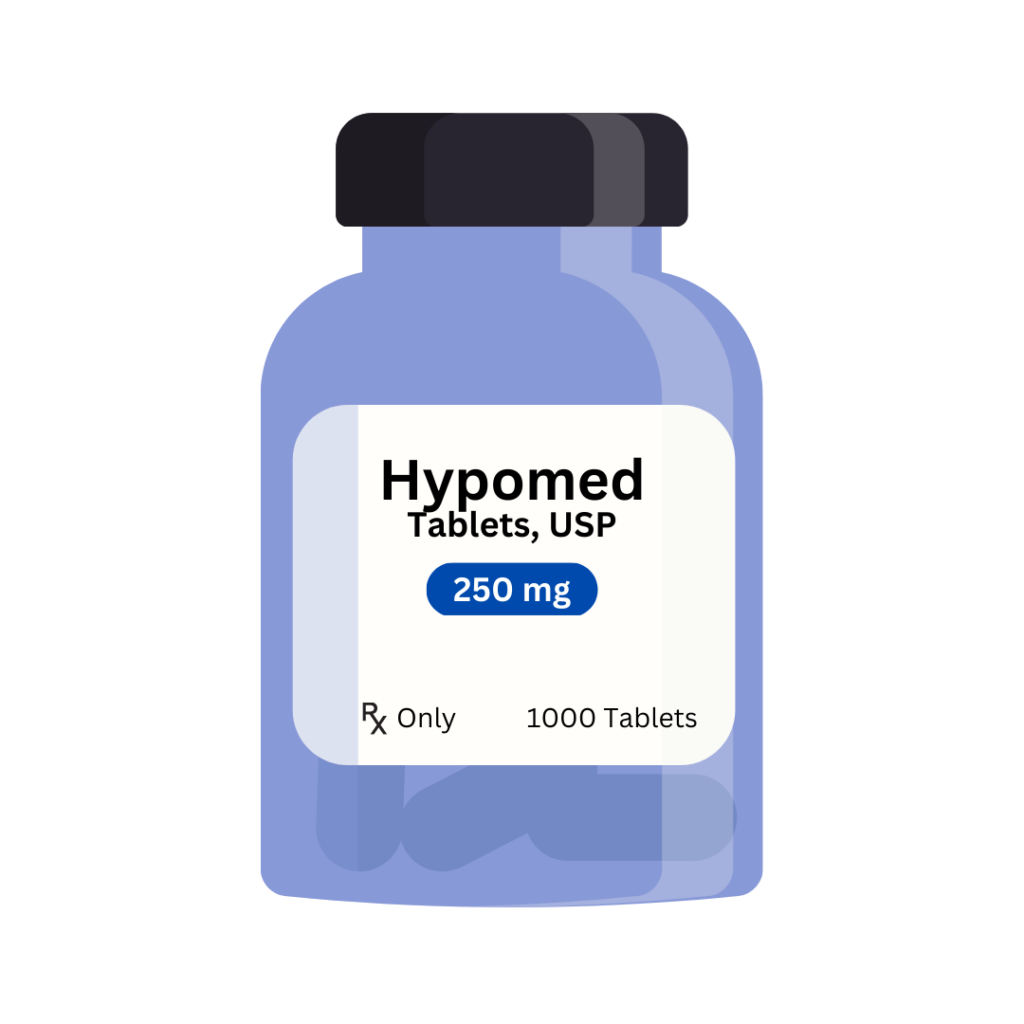
By looking at the above label, we see that Hypomed is a tablet and that each tablet contains 250 mg. The bottle contains 1000 tablets, which may be useful to know in terms of how long the bottle will last but is not relevant to calculating the dose. Here’s the pertinent information:
Desired = 500 mg (what the veterinarian instructed us to administer)
Have = 250 mg (the dose we have on hand, found on the Hypomed label)
Quantity = 1 tablet (the unit of measure that contains the 250 mg, found on the Hypomed label)
Which leads us to the following equation:

Notice that D (500 mg) and H (250 mg) have the same units (mg). If that were not the case, you would need to do some conversions before plugging numbers into the formula. Because the numerator and denominator have the same units, they cancel out, leaving us with tablets.

After dividing 500 by 250, we are left with a straightforward equation to solve:

By using the “Desired Over Have” formula, we have calculated that we need to administer 2 tablets of 250 mg- Hypomed in order to achieve the prescribed dose of 500 mg.
Example 2: Administer 125 mg of Hypomed
Sometimes, the amount you need to administer will be smaller than what you have on hand. The formula is still the same, but you’ll end up with an answer that is smaller than 1 full unit. In the case of administering a medication that comes in tablet form, this means you will need to administer only a fraction* of the tablet. Let’s look at this more closely and imagine that we need to administer 125 mg of Hypomed (the same hypothetical medication used in the example above). The important information is:
Desired = 125 mg (what the veterinarian instructed us to administer)
Have = 250 mg (the dose we have on hand, found on the Hypomed label)
Quantity = 1 tablet (the unit of measure that contains the 250 mg, found on the Hypomed label)
When we plug this information into our formula, we end up with the following equation:

Again, the mg will cancel out, leaving us with an answer in tablets. After dividing 125 by 250, we have the following equation:

In this example, we can pretty easily convert 0.5 to a fraction to determine how much of a tablet to administer (½ tablet). It’s usually difficult to break tablets up into even pieces other than halves and (sometimes) quarters, so if we ended up with a fraction such as ⅔, we’d give our veterinarian a call back to ask how to proceed. Depending on the medication and the situation, they may advise you to round up or down, or they may suggest using a different formulation (such as a liquid oral suspension) for more accurate dosing.
*Just Because You Can Physically Cut It Into Pieces Doesn’t Mean You Should!
Before cutting or breaking a tablet, be sure to check in with your veterinarian to make sure it is appropriate to do so. Some medications must be administered whole, and others may pose human safety risks if cut or crushed. Additionally, some tablets may crumble if broken into pieces, resulting in doses that are inaccurate. Lastly, chewable tablets that are split may not have even distribution of the drug in the tablet, which may result in over- or under-dosing.
If the medication you are administering is a capsule rather than a tablet, fractions won’t be an option (you can’t cut a capsule into tidy, even pieces). If we had Hypomed capsules rather than tablets and needed to administer 125 mg to someone, we’d contact our veterinarian to get their recommendation about how to proceed. As mentioned above, in some cases, they may advise you to round up or down, or they may prescribe a different formulation.
Example #3 – Administer 500 mg of HypoCure
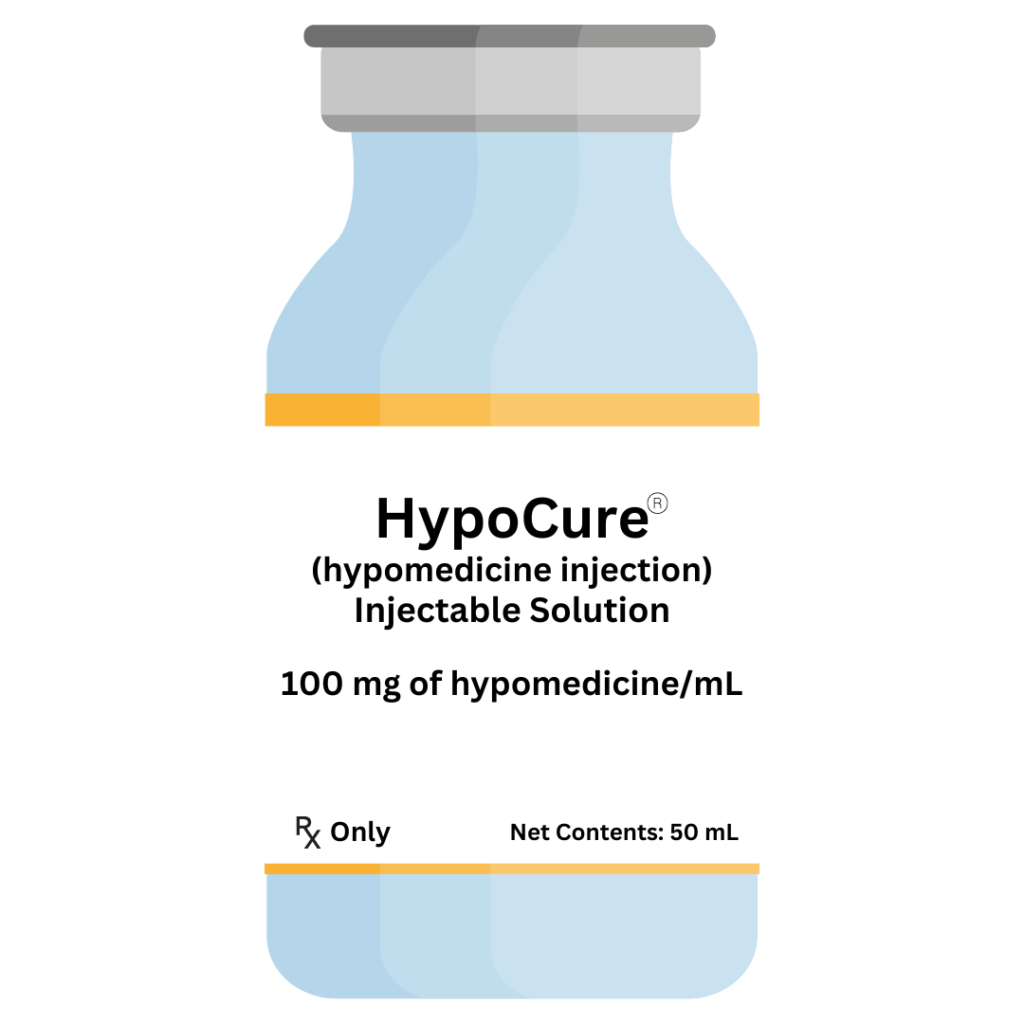
In the above label, we see HypoCure is an injectable solution and that each milliliter (mL) of solution contains 100 mg of the medication. Things can get a little trickier when dealing with liquids, but luckily we can use the same “Desired Over Have” method. The important information here is as follows:
Desired = 500 mg (what the veterinarian instructed us to administer)
Have = 100 mg (the dose we have on hand, found on the HypoCure label)
Quantity = 1 ml (the unit of measure that contains the 100 mg, found on the HypoCure label)
Which leads us to the following equation:

As with the previous example, we see that our D and H have the same units (mg), which will cancel out. If this weren’t the case, we’d have to do some (careful) conversions.

Which then becomes:

And then becomes:

To administer 500 mg of HypoCure injectable solution, we need to administer 5 mL (following the rest of the dosage instructions our veterinarian gave us in terms of administration route, frequency, etc.).
Just like in the example above with Hypomed, if our D value were smaller than our H value, we’d end up with an answer that is less than 1, which in the case of HypoCure injectable solution, would mean we’d need to administer less than 1 mL.
Example #4 – Administer 500 mg of Hyposol
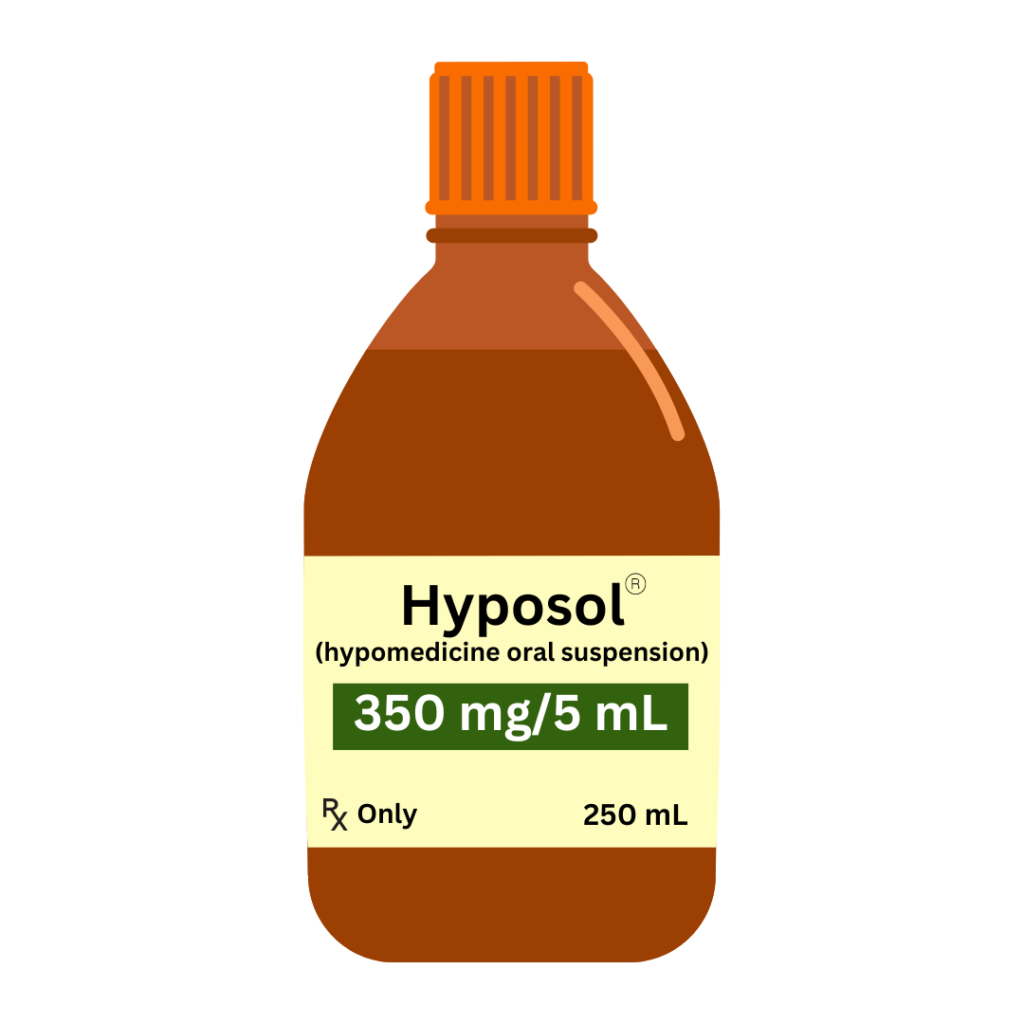
If, based on the previous examples, you have been wondering what the point of Q (“quantity”) was in our formula since it was 1 both times, this example will show you why the Q is important. In the above label, we see that Hyposol is an oral suspension and that there are 350 mg of medication in every 5 ml. If we misread this and thought there were 350 mg per every 1 ml of oral solution, we would end up administering too little medication.
Continuing with the “Desired Over Have” method, here’s the important information:
Desired = 500 mg (what the veterinarian instructed us to administer)
Have = 350 mg (the dose we have on hand, found on the Hyposol label)
Quantity = 5 ml (the unit of measure that contains the 350 mg, found on the Hyposol label)
Which leads us to the following equation:

As with the other examples, our D and H have the same units, which cancel out:

After dividing 500 by 350, we have the following (rounded to the nearest hundredth):

We need to administer 7.15 ml of Hyposol oral solution in order to properly follow our veterinarian’s instructions.
Example #5 – Administer 450,000 units of Hypotreat
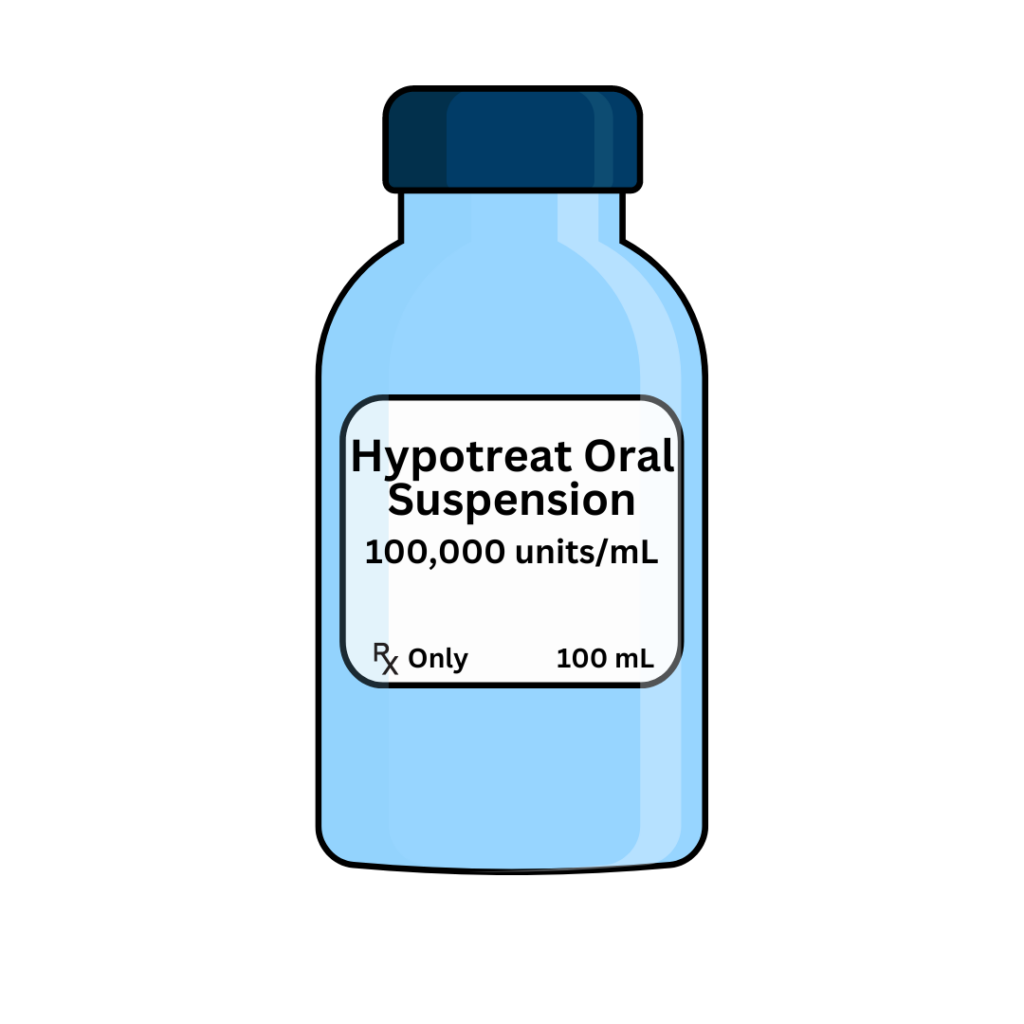
This example may look intimidating because of the big numbers, but the steps are the same as above. Here, we see that Hypotreat is an oral suspension and that there are 100,000 units in each milliliter. Here’s the information we need for our equation:
Desired = 450,000 units (what the veterinarian instructed us to administer)
Have = 100,000 units (the dose we have on hand, found on the Hypotreat label)
Quantity = 1 ml (the unit of measure that contains the 100,000 units, found on the Hypotreat label)
Which leads us to the following equation:

As with the examples above, we can start by canceling out the matching units in the numerator and denominator:

Then we can divide 450,000 by 100,000 to make the equation much less scary looking:

We need to administer 4.5 mL of Hypotreat in order to properly follow our veterinarian’s instructions.
Tips To Help Avoid Mistakes
Making a mistake while calculating drug doses can have serious consequences, so you want to make sure you get it right. Here are a few tips to help you avoid issues (or to catch them before it’s too late).
Make Sure Your Veterinarian’s Instructions Are Clear
We already covered this above, but it bears repeating. You can do all your calculations right, but if you are not starting with an accurate understanding of what your veterinarian is instructing you to do, you’re going to have problems.
Double-Check Your Units
Along these same lines, double-check all the units you are working with. If anything is unclear (does that say “µg” or “mg”?), ask for clarification. Similarly, pay attention to whether your veterinarian is using kilograms or pounds in their instructions and make sure you follow suit.
Be VERY Careful With Conversions
If you need to do conversions, do this very, very carefully and double-check your answer. Always think about whether you are moving towards a larger or smaller numeral. Remember that when converting from pounds to kilograms, you will always end up with a smaller numeral. Similarly, if you are converting milligrams to micrograms or milliliters to liters (or other units), think about whether you should end up with a larger or smaller numeral. When you are just starting out, you may want to compare your answer to an online conversion calculator just to be safe.
Have An Idea Of What The Answer Will Be Before You Do The Math
Depending on the exact equation, this may be a vague idea, but it’s still helpful to have some sort of idea of what the answer will be. Consider your D, H, and Q from the “Desired Over Have” formula – based on these numbers, you should have an idea of approximately how much you will need to administer (this may be as general as simply knowing you are going to need to administer more or less than 1 unit). By having a sense of the answer, you are more likely to catch a mistake.
When calculating the dose of a medication you use regularly in others of the same species, it’s helpful to think about how much other chickens, sheep, horses, etc. usually get. If you know that most goats usually need 6-12 mL of this medication, but you calculate a dose of 50 mL for a similarly sized goat resident, this should be a red flag, and you’ll want to recalculate.
Write It Out
It’s a really good idea to write out the formula you are using and then plug in the appropriate numbers. Even if you plan to use a calculator, writing it out is helpful to double-check that you are starting with the right equation and that certain units can cancel out.
Use A Calculator
But wait, didn’t we just tell you to write it out? Writing out the equation, units and all, is a helpful step, but when it comes to actually dividing or multiplying, it’s a good idea to use a calculator. Caregiving is hard work, and you likely have lots on your plate. Sometimes our brain just doesn’t want to do math, so let the calculator be your friend. That said, remember that mistakes can happen with a calculator, too.
Double-Check Your Answer
Whether you use a calculator or not, don’t do the math just once and call it a day. Do it twice… at least. If it’s something you can easily calculate in your head, consider double-checking with a calculator. If you started out on the calculator, punch in those numbers again to make sure you get the same answer. If possible, it’s a really great idea to have someone else also calculate the dose so you can compare answers!
Your Turn!
Want to test your skills? Check out the hypothetical dosing instructions below! Calculate the dose, and then click the toggle to check your answer. As with the examples above, we are going to focus only on the dose. In real life, you will need more information in order to know how to properly administer medications (i.e., administration route, frequency, duration).
Question #1
Your veterinarian instructs you to administer Hyposure at a dose of 5 mg/kg to Violet, who weighs 11 lbs. How many tablets of Hyposure does Violet need per dose? (Round your answer to the nearest ¼ tablet.)
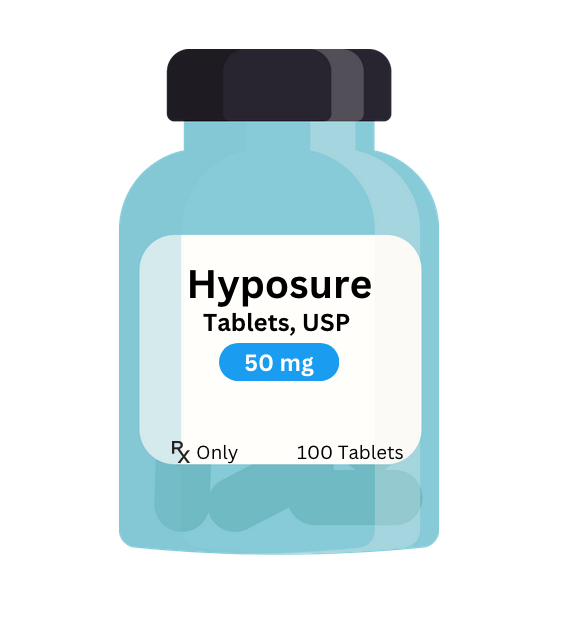
Wondering How We Got Our Answer?
First, we need to convert Violet’s weight to kilograms (11 lbs ÷ 2.2 = 5 kg). Once we have Violet’s weight in kilograms, we can calculate how many milligrams of Hyposure she needs at each dose:
Then, to figure out how many tablets we need, we can use the “Desired Over Have” formula:
D = 25 mg
H = 50 mg
Q = 1 tablet
Question #2
Your veterinarian instructs you to administer HypoWorm to Reggie at a dose of 6 ml per 50 lbs. Reggie weighs 200 lbs. How many milliliters of HypoWorm does Reggie need per dose?
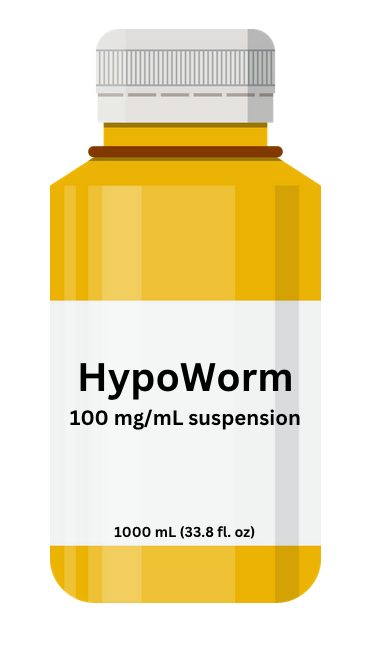
Wondering How We Got Our Answer?
When we plug the pertinent information into our formula, we end up with the following equation:
Question #3
Your veterinarian instructs you to administer HypoRemedy to Kiwi at a dose of 60 mg/kg. Kiwi weighs 3 kg. How many milliliters of HypoRemedy does Kiwi need to receive per dose? (Round your answer to the nearest hundredth.)

Wondering How We Got Our Answer?
We can use the following equation to calculate how many milligrams Kiwi needs per dose:
Then, we can use the “Desired Over Have” formula to calculate how many milliliters Kiwi needs:
D = 180 mg
H = 240 mg
Q = 5 mL
There you have it. Our math teachers were right! We do need to know this stuff in “the real world.” If you haven’t flexed these mathematical muscles recently, we hope this resource was the refresher you needed. If you’re still feeling rusty, keep practicing! And remember, if you are ever in doubt about how much medication to administer or are unsure about any other aspect of your veterinarian’s instructions, always play it safe and connect with them for clarification.
SOURCES:
How To Read A Medication Label | Registered Nurse RN
Lesson 2: Understanding Expressions Of Drug Amounts | University Of Washington School Of Pharmacy
How To Do Drug Calculations For Veterinarians Made Easy | The Modern Vet
Weight-Based Dosage Calculations Desired-Over-Have Nursing School NCLEX Review | Registered Nurse RN








